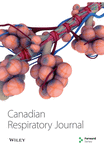Computed Tomography and Bronchoscopy in Endobronchial Tuberculosis
Abstract
BACKGROUND: The therapeutic response to endobronchial tuberculosis is usually evaluated by bronchoscopy. Currently, there are no published studies investigating the use of computed tomography for the evaluation of therapeutic response in endobronchial tuberculosis.
OBJECTIVE: A retrospective study was performed to evaluate the bronchoscopic and computed tomographic features of endobronchial tuberculosis before and after treatment. The aim of this study was to investigate the usefulness of computed tomography for the assessment of treatment.
METHODS: The clinical, pathological and bronchoscopic features of endobronchial tuberculosis were evaluated in 55 patients. The age range of the patients was 21 to 52 years. Computed tomography and bronchoscopy were performed before and after treatment.
RESULTS: Diagnosis of tuberculosis was confirmed by culture and histopathological examination. Bronchoscopic examination revealed 89 endobronchial lesions of various types in 55 patients. The exudative type was the most common. Follow-up bronchoscopy revealed that exudative-, ulcerative- and granular-type lesions healed completely. Computed tomography performed after treatment correlated well with the follow-up bronchoscopic findings.
CONCLUSION: The results suggest that follow-up computed tomography is useful for the evaluation of therapeutic response and complications associated with endobronchial tuberculosis, and may replace bronchoscopy.




